Exploring the Intricacies of Fushigi in Anime and Manga
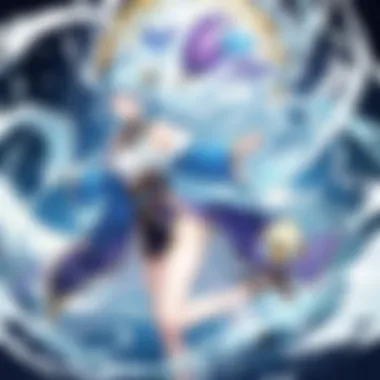

Intro
The concept of fushigi plays a pivotal role in anime and manga. It speaks to the profound sense of wonder that captivates audiences through intricate storytelling and character interactions. Understanding fushigi involves exploring its cultural roots, its evolution within Japanese narrative forms, and its psychological impact on viewers and readers across the world.
Series Overview
Synopsis and Premise
Fushigi is not limited to a single series or genre but can be observed in various works within the anime and manga landscape. Series such as Fushigi Yûgi and Mushishi exemplify this concept effectively. Fushigi Yûgi follows Tamaki's journey into a mysterious scroll where she must navigate complex relationships and fate. In contrast, Mushishi focuses on a wanderer who explores the ethereal world of mushi, living beings that embody nature's wonders. Both series convey a deep exploration of curiosity and the unknown.
Notable Characters
Characters often personify the essence of fushigi. In Fushigi Yûgi, Miaka Yūki discovers her rightful place in a world filled with intrigue and supernatural elements. The diverse cast, such as Tamahome and Nuriko, add various layers to her journey. Meanwhile, Mushishi’s protagonist, Ginko, represents the curious seeker. His calm demeanor and relentless inquiry into the mushi world highlight the awe and wonder inherent in exploration.
Themes and Motifs
Major Themes Explored
Fushigi encompasses themes of discovery, identity, and the relationship between humanity and nature. In both Fushigi Yûgi and Mushishi, characters embark on quests that lead to personal revelations. These narratives explore what it means to belong, the desire for understanding, and the push against fate.
Symbolism in Storytelling
Symbolism is key to understanding fushigi. The mystical elements seen in various series, like the sky, nature, and ethereal beings, symbolize both beauty and danger. These symbols compel characters to confront their fears and desires, fostering growth through the encounters they experience.
Artistic Style and Animation
Visual Aesthetics and Design
The artistic styles of these series contribute to the fushigi experience. Fushigi Yûgi employs vibrant colors and expressive character designs that evoke strong emotions. The visual storytelling is integral to unfolding the plot and enhancing the themes. On the other hand, Mushishi showcases a more subdued color palette with intricate details. This design choice promotes a meditative atmosphere, inviting viewers to reflect.
Animation Techniques and Trends
Animation techniques have evolved significantly, particularly in how they portray fushigi. Traditional methods may rely on hand-drawn frames that lend an organic feel to the storytelling. Current trends include blending 2D and 3D animation, attracting modern audiences while maintaining charm. This evolution allows for new expressions of fushigi, ensuring it remains relevant while embracing advancements in technology.
Fushigi is not merely a concept; it embodies the spirit of curiosity that motivates humanity to explore and understand the world around them.
Finale
Exploring fushigi in anime and manga reveals the underlying dynamics of wonder and inquiry in storytelling. Through rich narratives, compelling characters, and artistic expressions, fushigi serves not just as a thematic element but as a pivotal experience that resonates deeply with audiences.
Intro to Fushigi
Fushigi plays a critical role in the realm of anime and manga. This concept refers to the evocation of wonder, curiosity, and the uncanny. As a central theme, it shapes narratives and influences viewer perception. Fushigi not only captures the imagination but also offers a lens through which cultural beliefs and values can be examined. The exploration of fushigi can lead to a deeper appreciation for the art form and its impact on both Japanese and global audiences.
Defining Fushigi
Fushigi can be defined as a tangible sense of mystery or wonder within a narrative. It encompasses elements that inspire fascination and provoke thought. In anime and manga, fushigi often manifests through characters, settings, or events that challenge the ordinary. This can be as simple as a magical realm or an eccentric character, yet the effects can resonate more profoundly. It invites audiences to ponder what lies beyond their understanding, creating a pathway to exploration.
The word itself is derived from the Japanese language, where it denotes strangeness or peculiarities. This concept serves not just as a story device but also as a conduit for emotional engagement. Viewers might find themselves emotionally connected to the unfolding mysteries, enhancing their overall experience. Such connections elevate fushigi from mere narrative elements to essential components of storytelling.
Cultural Significance
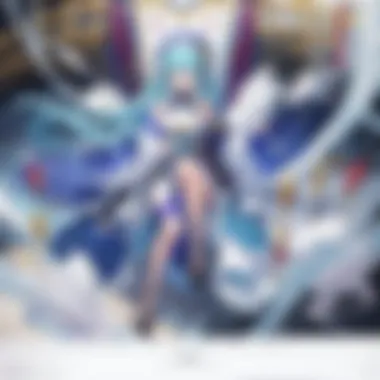

The cultural significance of fushigi cannot be understated. It reflects intrinsic aspects of Japanese culture, where spirituality and the unknown hold a vital position. In many cases, fushigi resonates with traditional beliefs about kami (spirits) and the natural world. The incorporation of fushigi in storytelling often serves as a bridge between past and present, allowing contemporary audiences to engage with historical elements.
In manga and anime, fushigi's cultural implications delve into the philosophical realm, exploring the nature of existence and identity. The themes often evoke questions about one's purpose and connection to the larger universe. This multifaceted perspective can be observed in various series, making fushigi a powerful narrative tool. The ability to evoke emotional responses rooted in cultural heritage enhances the work's depth, resulting in a richer viewer experience.
"Fushigi represents an intersection of emotion and intellect, inviting viewers to explore both the seen and unseen realms of understanding."
Historical Context of Fushigi
Understanding the historical context of fushigi is essential for grasping how the term resonates within both traditional and modern narratives in anime and manga. Fushigi is not merely a concept but a reflection of cultural shifts, societal values, and the evolution of storytelling techniques in Japan. The historical backdrop shapes the complexities and layers of fushigi, allowing audiences to appreciate its nuances.
Fushigi in Traditional Japanese Culture
Fushigi in traditional Japanese culture encompasses various elements such as folklore, spirituality, and nature. Rooted in Shinto beliefs, the sense of wonder stems from a deep respect for kami, the spiritual beings inhabiting natural phenomena. This perspective fosters a unique relationship between human beings and their environment. For instance, tales of yokai—supernatural creatures and spirits—exemplify how fushigi reveals the ethereal and often unpredictable forces of nature.
In literature and art, fushigi often manifests in the ambiguous depiction of beauty and the surreal. The concept is not confined to physical representation but extends to emotional and existential experiences. The works of authors like Lafcadio Hearn capture this sense through stories that blend the ordinary with the extraordinary, illuminating a world thick with mystery and allure. This heritage instills a profound appreciation for fushigi that influences generations.
Modern Interpretations in Manga and Anime
The transition from traditional to modern interpretations of fushigi is striking. In contemporary manga and anime, fushigi manifests through various storytelling methods. Practitioners utilize it to craft narratives that delve into identity, the human experience, and the relationship to the world. Series like Spirited Away or Fullmetal Alchemist employ this concept to explore themes of transformation and sacrifice, drawing audiences into complex moral dilemmas and fantastical realms.
Furthermore, modern creators have shaped fushigi into a narrative tool that captures not just the whimsical but also the deeply philosophical aspects of existence. The collaboration of adventure with psychological depth invites viewers and readers to reflect on their realities. The form and style may have evolved, but the core essence of fushigi remains—an invitation to look beyond the ordinary.
"Fushigi serves as a bridge between the known and unknown, forging connections that resonate with both traditional values and contemporary experiences."
Literary Elements of Fushigi
Fushigi serves as a significant thematic element within anime and manga, influencing how stories are constructed and characters are portrayed. Understanding literary elements associated with fushigi uncovers the unique frameworks that support narratives, enriching viewer experiences. The importance of this topic lies in its ability to highlight the intricate techniques that creators employ to engage audiences and explore profound themes.
Storytelling Techniques
Storytelling techniques in fushigi-centric narratives often revolve around creating a sense of enigma and wonder. These methods effectively captivate audiences by drawing them into complex worlds beyond initial perception. For example, creators may employ nonlinear narratives or cliffhangers to maintain suspense. Such techniques can serve to enhance the mystery surrounding characters' motives and the underlying plot. Additionally, the use of symbolism and allegory plays a pivotal role.
- Symbolism: Objects, characters, or events may signify deeper truths, creating layers of meaning for discerning viewers.
- Allusions: References to mythology or folklore can prompt audiences to relate personal experiences to broader cultural narratives.
Through these methods, fushigi stories encourage viewers to question their realities. Hence, the realm of the fantastic becomes a mirror reflecting their curiosities and fears. This depth not only enriches enjoyment but also sparks critical analysis of both the narrative and the cultural context it embodies.
Character Development and Mystique
In fushigi-laden tales, character development often intertwines with mystique, inviting audiences to engage more deeply with narratives. Characters may initially appear vague or enigmatic, leaving important aspects of their backstories undisclosed. This absence of information compels viewers to draw their conclusions, fostering an ongoing sense of engagement.
- Complexity: Characters may embody contradictions or dualities, further heightening intrigue. This complexity often reflects the internal struggles they face.
- Transformation: Characters frequently undergo profound changes, influenced by their experiences within mysterious settings or encounters with otherworldly beings. This transformation can serve as a primary plot driver, prompting audience investment.
Overall, fushigi serves as a powerful tool in character development. By weaving mystery and complexity into characters, creators enhance the viewers' emotional investment and provoke thought about broader themes, such as identity and belonging.
"The interplay of mystery and character development in fushigi narratives invites viewers to explore themes of self-discovery and the unknown."
In summary, the literary elements of fushigi enrich storytelling, creating immersive methods that captivate audiences. Understanding these elements provides insight into why such narratives resonate on both personal and cultural levels.
Fushigi in Popular Series
The exploration of fushigi in popular series serves as a vital aspect of understanding its broader implications in anime and manga. These series not only reflect cultural interpretations but also showcase how the elements of wonder and mystery enrich narratives. Fushigi creates a unique lens through which viewers engage with characters and the worlds they inhabit. By analyzing these themes in key series, we can gain insights into audience reactions and the representation of curiosity in storytelling.
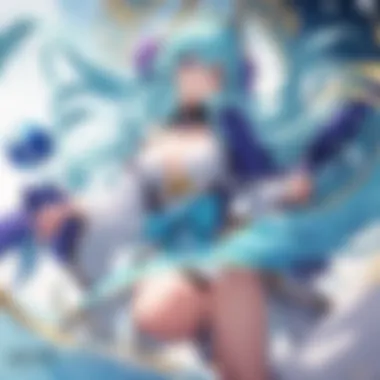
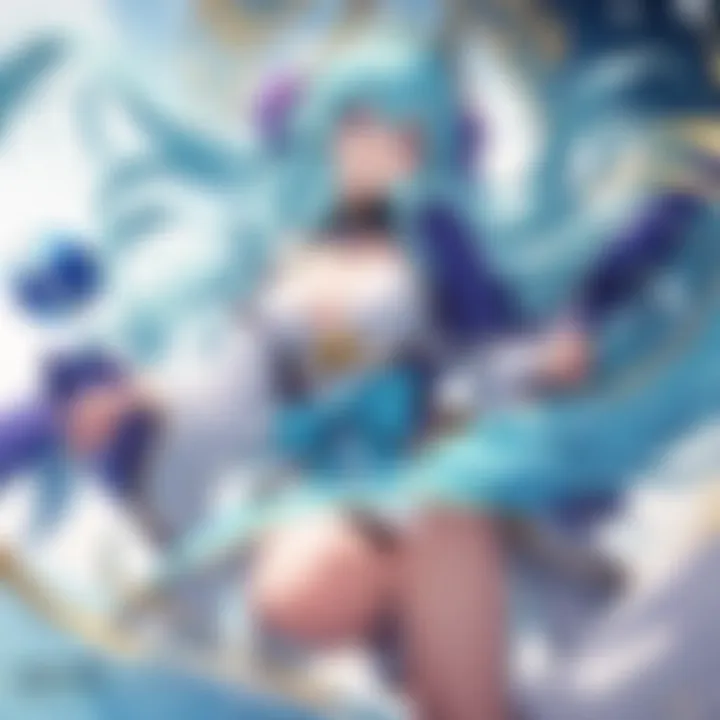
Case Study: Spirited Away
Spirited Away, directed by Hayao Miyazaki, is a definitive example of fushigi in action. The film tells the story of Chihiro, a young girl transported to a mystical world filled with spirits and strange creatures. Here, fushigi is not merely an artistic choice, but it drives the plot and character development.
- Mystical Elements: The presence of entities like No-Face emphasizes the unpredictability and wonder in Chihiro’s journey. It raises questions about identity and existence, challenging her perceptions.
- Cultural Symbols: Many aspects of this world directly draw from Shinto beliefs, providing a deep cultural context that enhances the viewer's connection to fushigi.
Chihiro's transformation throughout the narrative illustrates how fushigi can catalyze personal growth, making it a pillar of the film. This element leaves audiences reflecting on their own experiences of wonder and change.
Case Study: Fullmetal Alchemist
Fullmetal Alchemist, created by Hiromu Arakawa, incorporates fushigi through its unique blending of alchemy with emotional storytelling. The use of fushigi here manifests in both the narrative's magical elements and the philosophical questions it raises about sacrifice and humanity.
- Alchemy as a Catalyst: The laws of equivalent exchange present a fushigi-like structure that drives Edward and Alphonse Elric’s quest. This principle leads to both astounding successes and profound failures.
- Character Depth: Each character represents different aspects of curiosity and wonder, from the Elrics' quest for redemption to the various homunculi that embody human emotions.
This series illustrates that fushigi is not only about the fantastical but also about exploring the intricacies of the human experience, compelling viewers to ponder existential queries.
Case Study: Naruto
In Naruto, Masashi Kishimoto employs fushigi in both the storyline and character arcs. The narrative follows Naruto Uzumaki as he seeks acknowledgment and strength in a world rich with lore, jutsu, and ninja mythology.
- Ninja Techniques as Fushigi: The diverse jutsu techniques exemplify wonder, captivating viewers with their complexity and creative possibilities. Each character’s abilities create a sense of awe.
- Themes of Identity: Naruto's journey mirrors the struggles of identity, friendship, and belonging. His transformation from an outcast to a hero reflects the fushigi inherent in personal growth and discovery.
Overall, Naruto portrays fushigi as a multifaceted part of its narrative. It emphasizes how elements of wonder can impact identity and community, making the series resonate on various emotional levels.
Thematic Elements Associated with Fushigi
The thematic elements related to fushigi play a significant role in how anime and manga convey complex ideas and emotions. Fushigi, with its inherent position of wonder, creates pathways for exploring deeper themes that resonate with audiences. This part examines two core thematic elements: the exploration of identity and the connection with nature and spirits. These themes not only enrich narratives but also serve as a touchstone for viewer engagement.
Exploration of Identity
In many anime and manga series, fushigi acts as a metaphor for the journey of self-discovery. Characters often face mystical challenges or bizarre situations that compel them to confront their inner selves. This exploration can manifest through various plot devices, such as alter egos, parallel worlds, and supernatural abilities.
For instance, in series like Naruto, the protagonist navigates his identity amid conflicts of power and belonging. The use of fushigi elements highlights his internal struggles while seeking acceptance within his village. This theme provides viewers a chance to reflect on their own identities, prompting them to question who they are versus who they want to be.
Moreover, identity exploration through fushigi encourages a broader dialogue around cultural identity, personal growth, and societal expectations. It resonates particularly well with younger demographics, serving as a mirror for their own experiences.
Connection with Nature and Spirits
Another critical thematic element associated with fushigi is the connection with nature and spirits. Many anime and manga draw on traditional Japanese folklore, where nature is not merely a backdrop but an active participant in storytelling. This connection emphasizes the idea of harmony between humanity and the natural world.
For example, Spirited Away masterfully intertwines fushigi with the motifs of spirits and environmental consciousness. The protagonist, Chihiro, encounters spirits who represent various aspects of nature, each bringing their own unique lore and significance. Through these interactions, the narrative digs into environmental themes while emphasizing respect for nature.
This theme resonates deeply as it reminds viewers of the ecological crises facing our world today. By incorporating fushigi elements that highlight spiritual connections to nature, these works encourage an appreciation for the environment and its preservation.
"Fushigi adds layers of meaning to storytelling. It allows for both personal and universal explorations of identity and nature, prompting deep reflection among audiences."
Fushigi and Audience Engagement
Understanding fushigi is not just essential for appreciating its role in anime and manga. It significantly influences how audiences connect with stories. This engagement is crucial to the success of works that employ fushigi elements. It can evoke wonder, curiosity, and a profound emotional response to characters and plots.
Fushigi creates a common ground for viewers and readers, often leading to deeper discussions and interpretations. When audiences experience the suspension of disbelief, they become more invested. This leads to a more immersive experience, enhancing the enjoyment of the narrative.
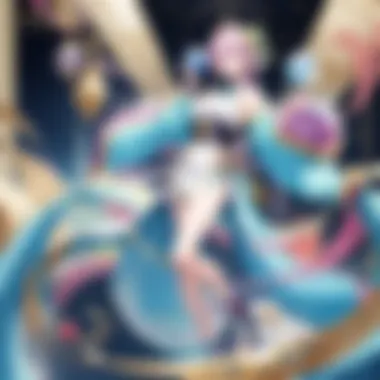
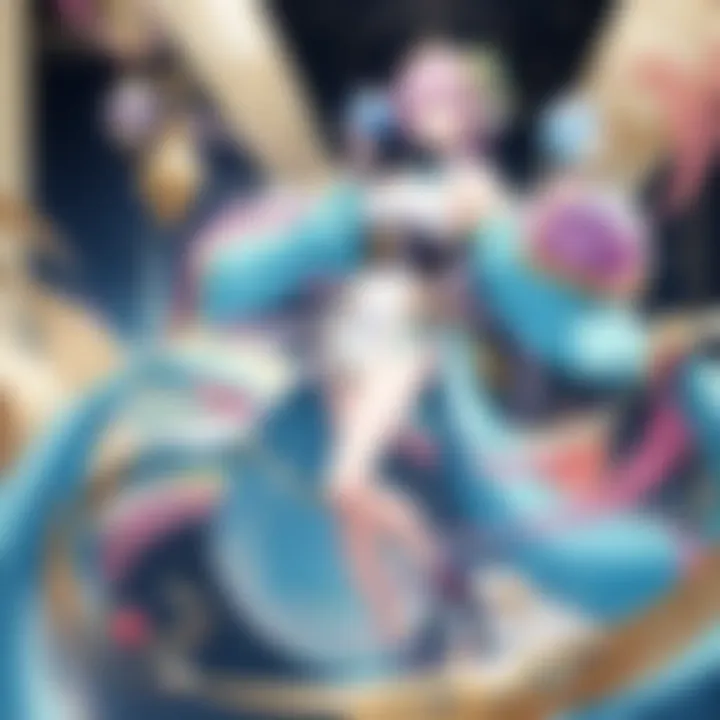
Viewer Reactions to Fushigi Themes
Viewer engagement with fushigi themes can vary widely depending on personal interpretations and cultural backgrounds. Some fans may find fushigi themes particularly resonate due to their own experiences of wonder and discovery in life. For instance, when characters encounter strange creatures or mysterious phenomena, viewers often reflect on similar moments from their own lives. Such connections enhance the relatability of the narrative.
The emotional reaction can manifest itself in several ways:
- Curiosity: Viewers may feel compelled to learn more about the characters or the underlying concepts presented in the story.
- Empathy: Fushigi often elicits empathy towards characters who embark on adventures filled with uncertainties.
- Articulating Thoughts: Fans frequently discuss their reactions on platforms like Reddit or Facebook, where they can express their interpretations of fushigi in their favorite series.
This engagement creates a robust community around anime and manga. It's where viewers share insights and broaden their understanding of the themes presented.
The Role of Fushigi in Fandom Culture
Fushigi plays a central role in shaping fandom culture. It affects how communities form, grow, and interact, leading to an enriched experience overall. Fans often gather around their shared appreciation for fushigi elements, discussing favorite series and character arcs that highlight these themes.
The impact of fushigi can be seen in:
- Fan Art: Many fans express their admiration by creating art inspired by the wonderous aspects of their favorite franchises.
- Cosplay: Dressing up as beloved characters that embody fushigi invites a deeper engagement with the story and the fandom itself.
- Conventions and Events: At events, discussions often center around fushigi, revealing how integral it is to the community’s identity.
"Fushigi provides a lens through which fans can critically analyze the narratives that move them, often igniting passionate discussions that keep the spirit of the story alive beyond its original form."
In summary, fushigi serves not only as a narrative element but also as a vital connector within fandom culture. It enhances engagement between the audience and the content, allowing fans to find meaning in shared experiences. As it evolves, fushigi continues to shape how stories are told and received in anime and manga.
Comparing Fushigi Across Cultures
Fushigi, as a concept that signifies wonder and the unknown, has allowed scholars and fans to explore its borders beyond Japan. This comparison between cultures helps in understanding how fushigi manifests differently depending on societal values and historical contexts. The idea of wonder is universal but is expressed distinctively in various cultural narratives. Examining these variations enriches the global appreciation of fushigi, allowing audiences to engage with it on multiple levels.
Western Interpretations of Wonder
In Western culture, the concept of wonder often translates to a fascination with the unexplained. This can be seen in literature, films, and art that focus on mystery and the supernatural. Notable examples include J.K. Rowling's Harry Potter series and Hayao Miyazaki's films, which blend fantastical elements with relatable characters. In the West, wonder often leads to a quest for knowledge and a desire to uncover truths.
- The Approach to Unexplained Events: In Western stories, unexplained events create suspense and propel the plot.
- Quest Motif: The journey to discover answers is prominent, often leading characters to self-discovery.
- Individualism vs. Collectivism: Western interpretations frequently emphasize individual achievement in facing the unknown, contrasting with the communal approach seen in Japanese narratives.
This focus on the individual influences how wonder is experienced and depicted. The Western lens tends to frame fushigi as a challenge or a mystery to solve rather than a harmonious coexistence with the unknown.
Cultural Exchange and Its Impact
Cultural exchange plays an essential role in shaping how fushigi is perceived across borders. As anime and manga have gained global popularity, Western audiences have adopted and adapted these concepts in creative ways. The rise of anime conventions and online communities has fostered dialogue about cultural interpretations.
- Increased Global Awareness: The exchange allows for a deeper understanding of Japanese culture and its subtleties related to fushigi.
- Influence on Storytelling: Western creators incorporate fushigi elements into their narratives, sparking a new wave of content that marries Eastern and Western sensibilities.
- Intentional Misinterpretations: With adaptations, subtle nuances might be lost, leading to misconceptions about the original intent of fushigi in Japanese culture.
"Understanding fushigi through a cultural lens enables creators and audiences alike to appreciate its rich tapestry and significance across different contexts."
This cultural dialogue enriches both Western and Japanese narratives, producing an increasingly complex understanding of fushigi that appeals to diverse audiences. The impact of this exchange continues to evolve, prompting creators to explore themes of wonder in inventive and profound ways.
Epilogue: The Enduring Nature of Fushigi
Fushigi represents a unique blend of curiosity and wonder in anime and manga. This article aims to underscore its importance in both narrative structures and cultural expressions. Its enduring nature is evident through its continual evolution and adaptation in different contexts. As stories unfold, fushigi catalyzes profound connections between characters and their environments, influencing not only character growth but also audience engagement.
Future of Fushigi in Anime and Manga
The future of fushigi in anime and manga presents exciting possibilities. As new creators emerge, they implement fresh perspectives on wonder and mystique. We can expect more experimental storytelling techniques. Virtual reality and interactive narratives offer new platforms to explore fushigi. This interplay of technology and art can enhance the spectator's experience. Fushigi can evolve further through these digital mediums. This change could redefine how we engage with familiar themes, and how they resonate across cultures.
Reflection on Its Cultural Impact
The cultural impact of fushigi cannot be overstated. It promotes deeper understanding and appreciation of different worldviews. By emotively engaging audiences, fushigi transcends mere entertainment. It creates a dialogue about life's mysteries and complexities. Series like Spirited Away leave viewers pondering philosophy, identity, and nature. The blending of fushigi with personal narratives fosters empathy and awareness.
"Fushigi is not just a genre; it is a perspective that enriches the narrative landscape."
Through the lens of fushigi, anime and manga address timeless questions, making their relevance profound across generations. This aspect ensures that fushigi will remain a vital part of storytelling. As we look ahead, reflecting on its significance prepares us for the future of this captivating element in anime and manga.



